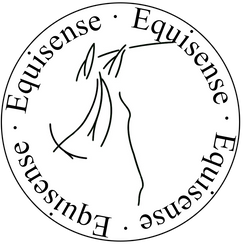Sound horsekeeping is at an essence!
Today, information is more easily available than ever. Yet I have been looking for a cheap or free way to get information so I can pass it on to clients, and I've struggled. Either things read too technical, or it's not in depth enough. I aim to cover both, please let me know when (not if!) I fail and I will do my very best to fix it!
I will cover equine history, physiology, psychology and anything else I can come up with or that gets suggested to me.
Please let me know if you have any questions or suggestions!
Welcome to the Supposedly Sound Horse guide
Throughout my working life I have come, and keep coming, across The Supposedly Sound Horse. He may be someones beloved pet or a top athlete. He may have an owner or rider that has noticed something is wrong, or he may not. I would like to bring more awareness about these horses and how to help them carry on.
What is The Supposedly Sound Horse?
I frequently recieve calls from owners or riders that have a problem with their horse, it may be that he is stiff or has started bucking, or he has started refusing to jump, or is showing assymetry in his flatwork. The horse is supposedly sound, he is not showing any signs of lameness. More often than not, when I see the horse, he is not, in my eyes, sound. He may have been cleared by the vet, as he is not lame.
How can a horse be neither sound nor lame?
Well, it depends on how you define sound. And lame. This will be discussed under Sound?. The discussion will focus on soundness, not lameness, as this is my profession, although i may add more as time goes.
What can I do to help him?
When I visit my clients I almost always leave them with some "homework". I do not feel it is beneficial enough that I find a problem, treat the horse and then leave the poor thing with it's very well meaning owner happily thinking 'This problem is solved!'. Because often this is not the case. Horses are creatures of habit; once a problem occurs and they learn that the problem is there, when you "remove" the problem you have to teach them that it is not there anymore. This will be more explained later on.
The advice I leave are stretches, massage, excercise regimes etc. For example, if a horse has torn a muscle, say the Braccio which basic function is to lift the front leg forwards, the horse is in pain when it wants to use the muscle, so the pain has to be removed (muscle has to heal). Once it has healed it doesnt hurt to lift the leg, but the horse is still not lifting it as it should. Hmm, Why? Because the muscle is weaker, it needs certain excercises to build it up, and to teach the horse the correct movement again. In case of a front leg lifting forwards it is not hard to come up with an exercise to strengthen it. But how often and how repetitive ought you to be with this training? And what would you do if it instead was the gluteal? Or the hamstring?
During the process of making this website I have sourced information from my excellent mind with its background in the field and EDUCATION!
Copyright @ All Rights Reserved
